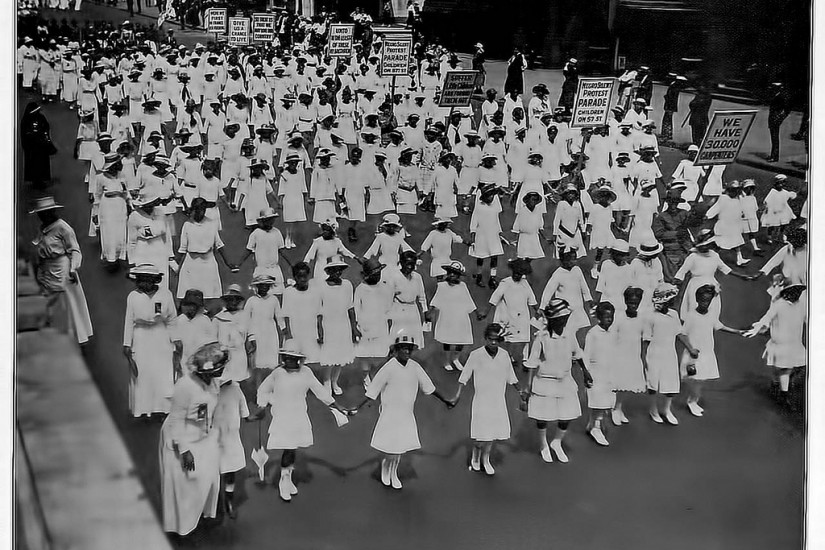One hundred years ago this week, thousands of African American children, women and men flooded New York City’s Fifth Avenue, dressed all in white.
That march on July 28, 1917, was a massive silent protest against racial violence. Outraged by several recently-publicized lynchings in Memphis, Tennessee, and Waco, Texas, along with attacks on black workers in East St. Louis, Illinois, the NAACP organized a march that some historians now call the beginning of the civil rights movement.
We spoke to Isabel Wilkerson, Pulitzer Prize-winning journalist and author of “The Warmth of Other Suns,” about the Silent Parade’s impact and the importance of mass protests.
What was the historical context of the Silent Parade?
If we were to scroll back 100 years, we would see that the country was in the midst of a major watershed moment known as the Great Migration. African Americans were arriving in great numbers to the big cities in the North and were recruited by northern industries. And they were also anxious to flee the Jim Crow South, to free the caste system in which they were born.
So that meant that thousands and thousands of African Americans were suddenly arriving to places like Chicago, East St. Louis, Detroit and New York. So when you look at the Silent March of beautifully-dressed African Americans, some carrying signs and walking wordlessly to the somber beat of the drum core, you recognize that they were expressing their citizenship, a citizenship that they had not been able to express before when they were restricted to the fields and the kitchens of the South. And so this was a display that has not been seen on this scale in the United States by people who had been held in a fixed place in the South.
What were they protesting? This demonstration was protesting mounting violence that was occurring all over the country, but more specifically, in the places that the people were seeking refuge in the North. So earlier in the summer, in May, late May, and earlier in the month of July in 1917, there were attacks on African Americans in East St. Louis. It was a massacre of African Americans that arose because of the tensions that had been set in motion because of the response to African Americans during the Great Migration.
